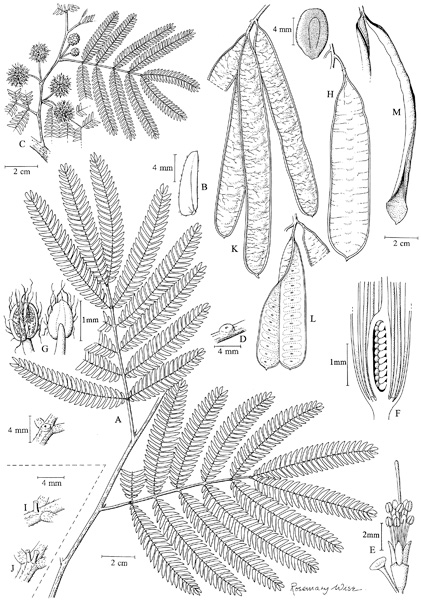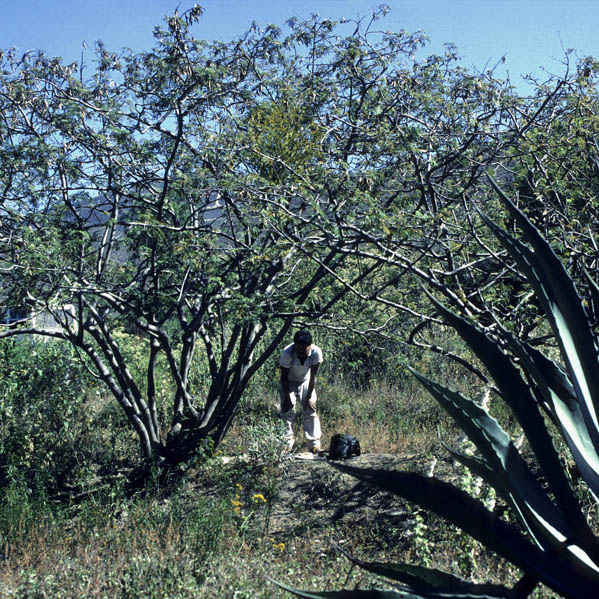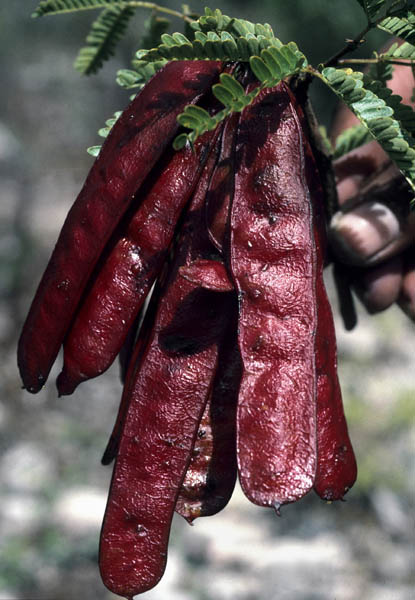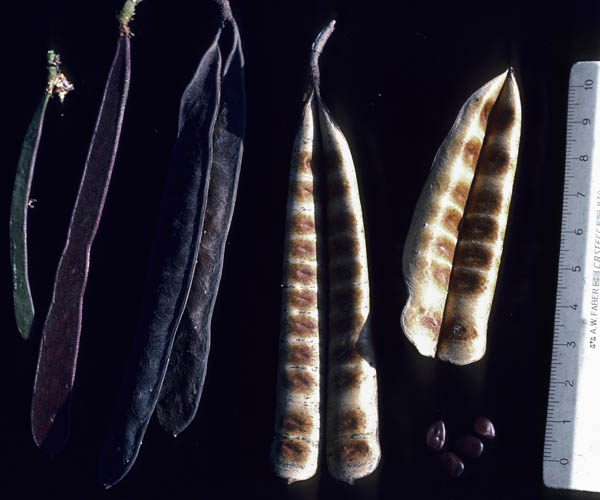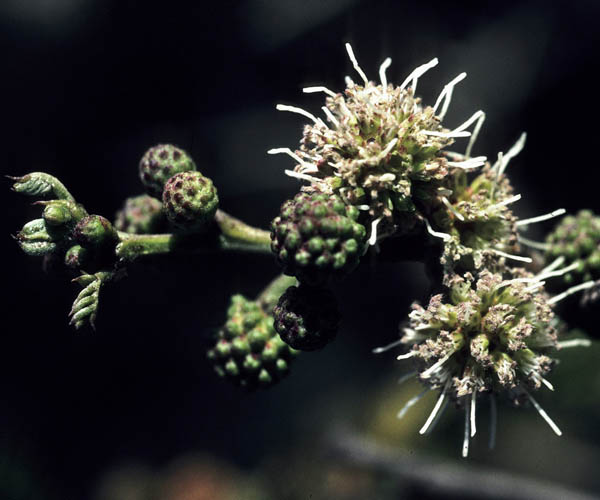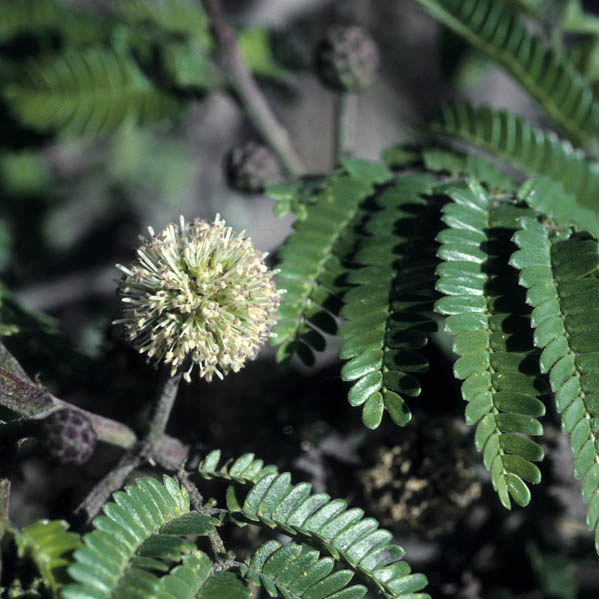|
Small, often multiple-stemmed, branchy shrub or small tree, 2-4 (-6) m tall, 10-15 cm bole diameter, with an open irregular, often spreading umbrella crown. Bark smooth, mid-grey-brown, with horizontally aligned pale rusty orange-brown lenticels and shallow rusty orange-brown vertical fissures, inner bark green then cream. Shoots terete, mid-orange or reddish brown, with pale brown, slightly raised lenticels, glabrous. Stipules 2.8-3.1 mm long, lanceolate, long-pointed, membranous basal wing asymmetric, ciliate on margins, persistent, becoming hard and stiff when dry. Leaves (8-) 10-17 cm long, (7.6-) 9-11 cm wide; petioles (including pulvinus) 9-23 mm long; rachis 4-10 cm long, variably sparsely puberulent or densely covered in short white pubescence, with 1-3 small variably cylindrical, columnar, peg-shaped or discoid, shallowly crateriform nectaries, 0.5-1.5 mm long, 0.5-1.5 mm wide, 1-1.5 mm tall, on ventral side of petiole and rachis at base of the lower pinnae pairs, sometimes at base of all pinnae pairs along rachis, and always with 1 or 2 additional nectaries at base of terminal pinnae pairs, sometimes a pair of nectaries at base of some pinnae pairs, apex of rachis extending beyond the terminal pinnae as a deltate, pointed, curling mucro, 1.5-3 mm long, variably covered in white hairs; pinnae 5-7 pairs; pinnular rachis 4-8 cm long, with a double ridge on ventral side, variably pubescent with white hairs, with 1 (-2) minute elliptic concave nectaries at base of terminal pairs of leaflets; leaflets (18-) 22-26 pairs per pinna, (5-) 7-10.5 mm long, 2-3.4 mm wide, sessile, asymmetrically truncate at base, linear-oblong, acuminate, sometimes cuspidate at apex, the cusp slightly curved towards apex of pinnae, entire, glabrous except ciliate on margins, thickened, subcoriaceous, strongly discolorous, dark glossy bottle-green above, paler mid-green below, only midrib visible on ventral side, two primary veins visible on abaxial side. Capitula 13-20 mm in diameter at anthesis, in fascicles of (1-) 2-5 in leaf axils on older shoots and on actively growing shoots with coeval leaf development, each capitulum with 55-70 flowers; peduncles 4-6 mm long, angled, variably pubescent or glabrous, with a subapical involucre of basally united bracts. Flowers subtended by small peltate pedicellate bracts, 2.3-2.6 mm long, 1 mm in diameter; calyx 2.5-2.7 mm long, glabrous or sparsely hairy on lobes, pale green; petals 4.1-4.5 mm long, weakly united at tips in bud, free to base at anthesis, glabrous, the lobe margins slightly thickened, pale green; filaments 4.5-6.5 mm long, arranged in two distinct ranks, pale creamy white; anthers densely pilose, dull pinkish grey or dull greenish brown fading dull mauve, apiculum absent; ovary 1.8-2 mm long, glabrous, pale cream-white, with 18-20 ovules, style 8.5-9 mm long, pale cream-white, with a porate, tubular or narrow-funnelform stigma, strongly exserted beyond anthers. Pods 1-4 (-7) per capitulum, 9-15 cm long, 16-26 mm wide, pendulous, nearly sessile, linear-oblong or oblong, the base acute, the apex rounded, sometimes retuse, often with a short pointed beak, compressed, 10-15-seeded, valves chartaceous, deep maroon and slightly glossy when unripe, turning dark reddish brown, glabrous or occasionally sparsely pubescent, the margins slightly thickened, dehiscent initially along one suture, the valves reflexing transversely, sometimes forming tight rolls after dehiscence (Fig. 18D). Seeds 6.5-8.3 mm long, 5-6.8 mm wide, compressed, circular to ovate, deep chestnut-brown, glossy, aligned transversely in pods; pleurogram visible, regular, U-shaped, 90% arm extension, symmetrical. Chromosome number: 2n = 112 (Sorensson & Brewbaker 1994; Palomino et al. 1995). Fig. 47.
|

